
The Battle of Marengo was fought on 14 June 1800 between French forces under the First Consul Napoleon Bonaparte and Austrian forces near the city of Alessandria, in Piedmont, Italy. Near the end of the day, the French overcame General Michael von Melas' surprise attack, drove the Austrians out of Italy and consolidated Bonaparte's political position in Paris as First Consul of France in the wake of his coup d'état the previous November.
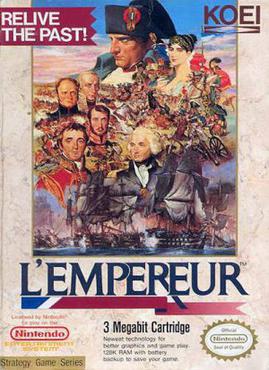
L'Empereur is a turn-based strategy video game for the Nintendo Entertainment System released by the Koei company in 1989.

Napoleon, subtitled "The Waterloo Campaign, 1815", is a strategic-level block wargame published by Gamma Two Games in 1974 that simulates the Battle of Waterloo. A number of versions of the game have been produced by Avalon Hill and Columbia Games.

Alexander the Great is a board wargame first published by Guidon Games in 1971 that simulates the Battle of Arbela in 331 BCE, also known as the Battle of Gaugamela. A revised edition was published by Avalon Hill in 1974. Both editions of the game were notable for having what one critic described as "one of the ugliest maps ever to curse a war game."

War and Peace, subtitled Game of the Napoleonic Wars: 1805–1815, is a board wargame published by Avalon Hill in 1980 that simulates ten years of Napoleonic wars.

Anton Freiherr von Zach was an Austrian General with Hungarian ancestors, who enlisted in the army of Habsburg Austria and fought against the First French Republic. In the French Revolutionary Wars, he gained prominence as a staff officer. Still on active service during the Napoleonic Wars, he fought in the 1805 and 1809 wars. He was not given combat assignments after 1809.

Napoleon's Last Battles is a board wargame published by Simulations Publications in 1976 that simulates the last four battles fought by Napoleon. It was one of SPI's most popular games, and also received many positive reviews.

Arcola, The Battle for Italy 1796 is a board wargame published by Operational Studies Group (OSG) in 1979 and republished by Avalon Hill in 1983 that is a simulation of the Battle of Arcola between French and Austrian forces in 1796. The game was designed to tempt players to purchase OSG's previously published and larger wargame Napoleon in Italy.

La Grande Armée, subtitled "The Campaigns of Napoleon in Central Europe", is a board wargame published by Simulations Publications Inc. (SPI) in 1972 that simulates three campaigns of Napoleon.

Marengo: Napoleon in Italy, 14 June 1800 is a board wargame published by Simulations Publications Inc. (SPI) in 1975 as one of four games packaged together in the Napoleon at War "quadrigame". Marengo was also released as a separate game the same year. The game simulates the Battle of Marengo between Austrian and French forces.

Napoleon at War, subtitled "Four Battles", is a collection of four board wargames published by Simulations Publications Inc. (SPI) in 1975 that simulates various battles fought by Napoleon.

Breitenfeld, subtitled "Triumph of the Swedish System", is a board wargame published by Simulations Publications Inc. (SPI) in 1976 that simulates the 1642 Battle of Breitenfeld during the Thirty Years' War. Breitenfeld was a free game that appeared in Strategy & Tactics, designed to promote SPI's soon-to-be-launched wargame Thirty Years War. Breitenfeld proved popular and was also published as part of SPI's "folio" series of games.
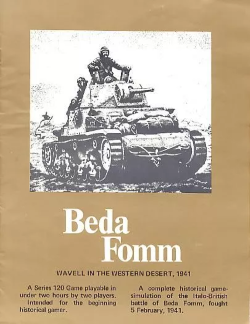
Beda Fomm, subtitled "Wavell in the Western Desert, 1941", is a board wargame published by Game Designer's Workshop (GDW) in 1979 that simulates the Battle of Beda Fomm during World War II. The game was part of GDW's "120 System", games that contained 120 counters, and supposedly could be played in 120 minutes.
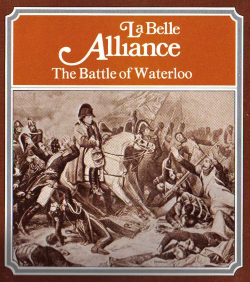
La Belle Alliance: The Battle of Waterloo is a board wargame published by Simulations Publications Inc. (SPI) in 1976 that simulates the Battle of Waterloo in 1814. It was one of four games that were published as part of the "quadrigame" titled Napoleon's Last Battles, but was also released as an individual "folio game", packaged in a shrinkwrapped cardboard folio.

The Battle of Nations, subtitled "The Encirclement at Leipzig, 16–19 October 1813", is a board wargame published by Simulations Publications Inc. (SPI) in 1975 that simulates the Battle of Leipzig in 1813. It was one of four games that were published as part of the "quadrigame" titled Napoleon at War, but was also released as a "folio game", packaged in a shrinkwrapped cardboard folio. It was popular in a 1976 poll of favorite wargames, and critics also gave it favorable reviews.

Napoleon's Last Campaigns is a board wargame published by Rand Game Associates (RGA) in 1974 that simulates the final campaigns of Napoleon in 1814 and 1815.
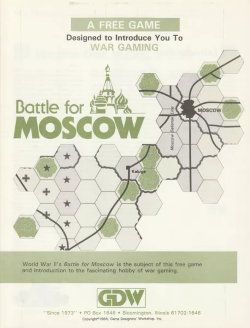
Battle for Moscow is a short and simple board wargame published by Game Designers' Workshop (GDW) in 1986 that simulates Operation Typhoon, the German attempt to quickly capture Moscow during the opening days of their surprise invasion of the Soviet Union in 1941 during World War II. The game was designed as a free giveaway to try to introduce new players to wargaming.

Wavre: The Opportunity Lost is a board wargame published by Simulations Publications Inc. (SPI) in 1976 that simulates the Battle of Wavre. Wavre was originally published as one of four games in the popular collection Napoleon's Last Battles, but was also released as an individual game.

Strike Force One, subtitled "The Cold War Heats Up — 1975", is a board wargame published by Simulations Publications Inc. (SPI) during the Cold War in 1975 that simulates a hypothetical clash in West Germany between Soviet Union invaders, and American defenders. The short and simple game was designed as an introduction to the hobby of wargaming, and was given away as a free promotional item.
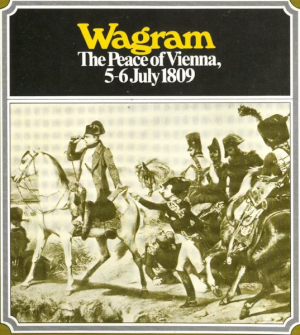
Wagram: The Peace of Vienna, 5–6 July 1809 is a board wargame published by Simulations Publications Inc. (SPI) in 1975 that simulates the Battle of Wagram in July 1809. It was one of four games that were part of the "quadrigame" titled Napoleon at War, but it was also released as an individual game with a set of metal miniatures. Wagram was rated highly in a 1976 poll of favorite wargames, and critics called it the best of the four games in the Napoleon at War box.




















